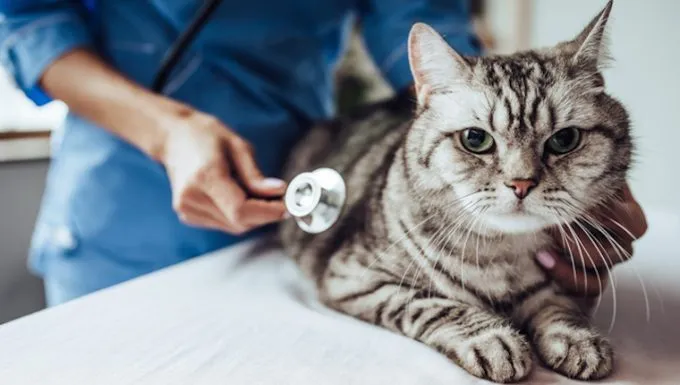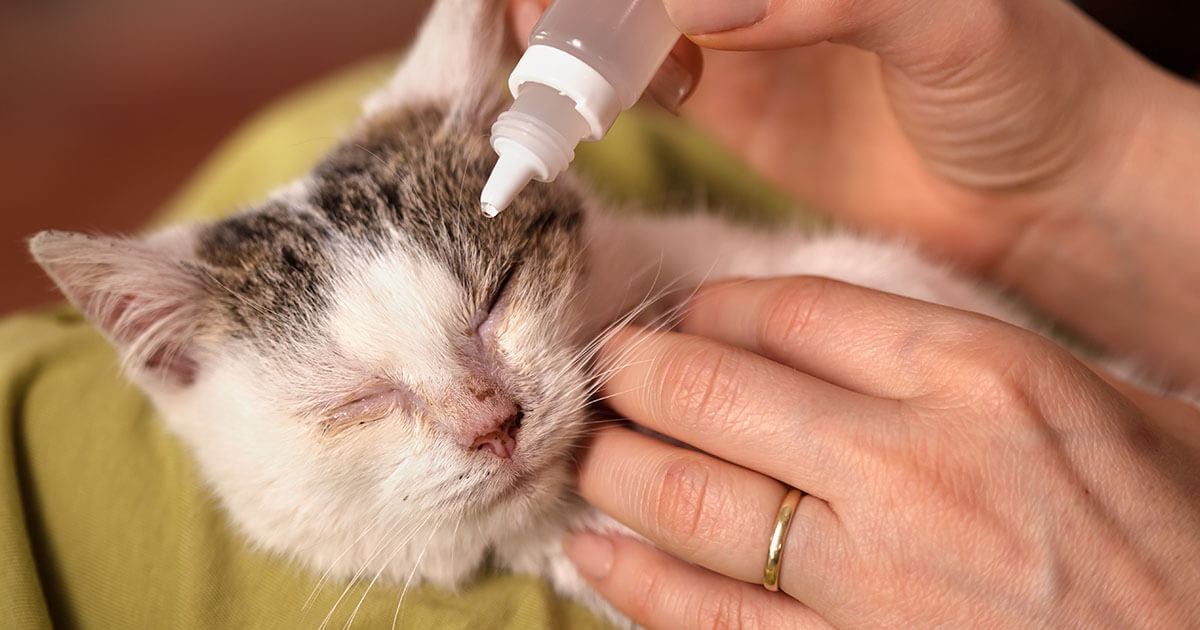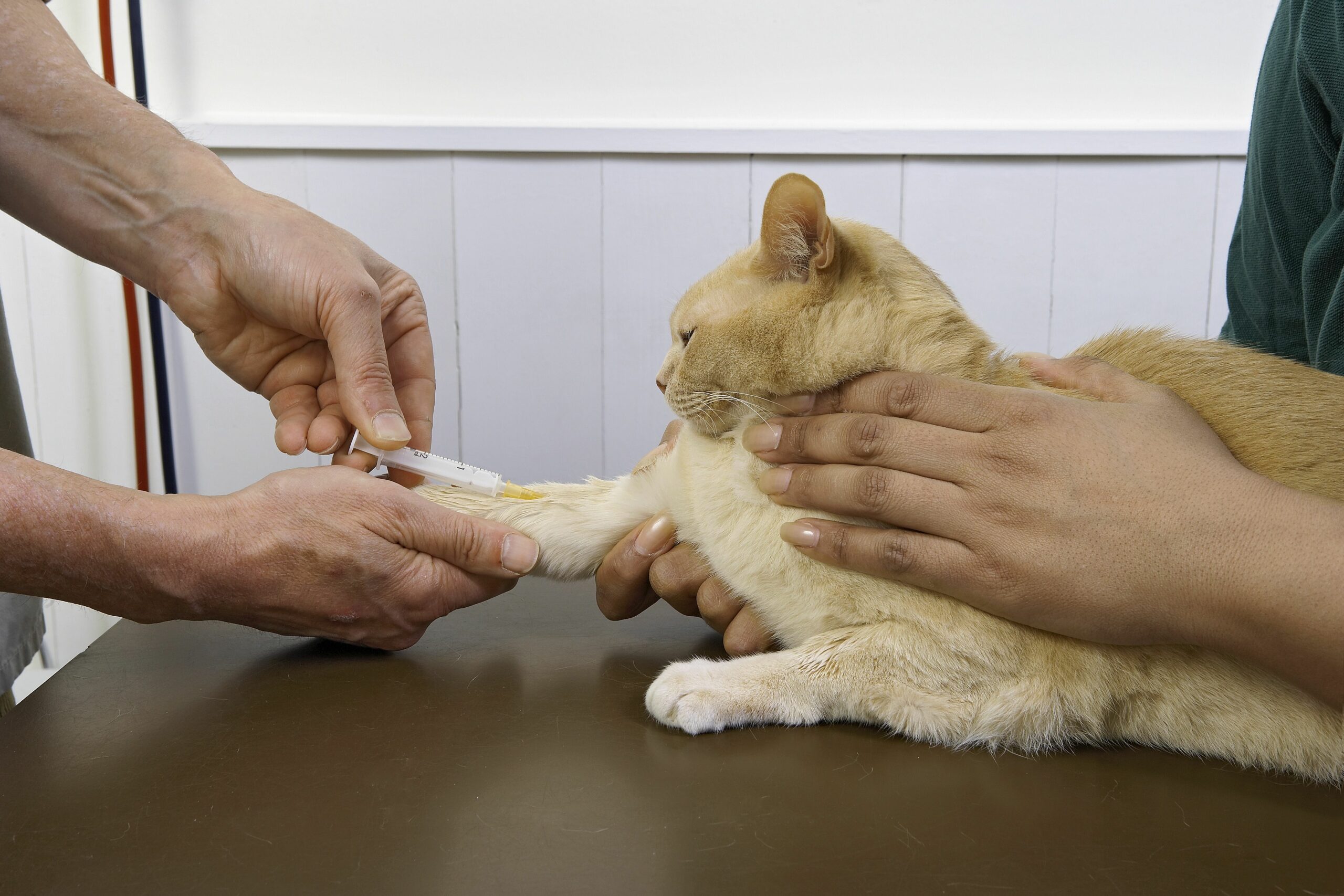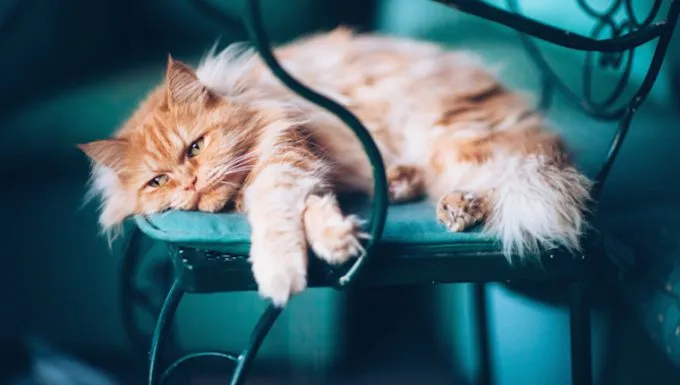Causes of Electrolyte Disturbance in Cats
Kidney Disease: A Common Cause

Kidney disease is a common cause of electrolyte disturbances in cats. The kidneys play a crucial role in regulating electrolytes, including sodium, potassium, chloride, and phosphorus, by controlling their excretion or reabsorption in the urine.
When kidney function is compromised due to chronic kidney disease (CKD) or acute kidney injury (AKI), the cat’s ability to regulate electrolytes is impaired. This can lead to an accumulation of toxic levels of certain electrolytes, such as potassium, which can be fatal if left untreated.
In CKD, the kidneys’ reduced ability to filter waste products, including excess electrolytes, can lead to a buildup in the cat’s body. This can cause hyperkalemia (elevated potassium levels), hyponatremia (low sodium levels), hypochloremia (low chloride levels), and hyperphosphatemia (high phosphorus levels).
The primary mechanism underlying electrolyte disturbances in CKD involves the kidneys’ decreased ability to reabsorb or excrete electrolytes. The kidney disease can also lead to secondary effects, such as dehydration, metabolic acidosis, and uremic toxins accumulation, which further contribute to electrolyte imbalances.
A key challenge in managing electrolyte disturbances associated with CKD is identifying the specific type of disturbance present. For instance, hyperkalemia often co-exists with hyponatremia due to the kidneys’ decreased ability to reabsorb sodium and excrete potassium.
Fortunately, many cases of electrolyte imbalances in cats can be effectively managed through targeted treatments that address the underlying cause of kidney disease. These may include dietary modifications, diuretic therapy to reduce fluid overload, and supplementation with specific nutrients to correct deficiencies or imbalances.
Dietary management is often a key component of managing electrolyte disturbances in cats with CKD. A carefully formulated renal diet can help regulate electrolytes by minimizing the cat’s intake of excess sodium, phosphorus, and other electrolytes that contribute to imbalance.
It’s essential for pet owners to work closely with their veterinarian to identify the underlying cause of electrolyte disturbances and develop an effective management plan tailored to their cat’s specific needs. By doing so, they can help prevent life-threatening complications associated with kidney disease and ensure their feline companion receives the best possible care.
Early detection and intervention are critical in managing electrolyte imbalances related to CKD or other underlying health conditions. Regular monitoring of your cat’s electrolyte levels through blood tests and urinalysis can help identify subtle changes and allow for timely interventions, which is crucial for preventing complications and ensuring the best possible outcome.
In summary, kidney disease is a common cause of electrolyte disturbances in cats due to impaired kidney function affecting the regulation of electrolytes. Early detection, targeted treatment, dietary management, and close veterinary monitoring are essential components of effectively managing these imbalances and ensuring optimal outcomes for feline patients with kidney disease.
Kidney disease is a leading cause of electrolyte disturbances in cats, particularly those with chronic kidney disease. As the kidneys lose function, they are unable to regulate electrolytes properly, leading to an imbalance.
The causes of electrolyte disturbances in cats are multifaceted and can be influenced by various factors.
Kidney disease is a leading cause of electrolyte disturbances in cats, particularly those with chronic kidney disease. As the kidneys lose function, they are unable to regulate electrolytes properly, leading to an imbalance.
When the kidneys fail to remove excess electrolytes from the body, it can lead to an accumulation of toxins and disrupt the delicate balance of electrolyte levels in the body. This can cause a range of symptoms including vomiting, diarrhea, and polydipsia (excessive thirst).
Other causes of electrolyte disturbances in cats include:
In conclusion, understanding the causes of electrolyte disturbances in cats is essential for providing proper care and treatment. It is crucial to identify and manage underlying conditions, monitor electrolyte levels, and provide supportive care to maintain a balanced electrolyte profile.
Fluid Loss: Dehydration and Diarrhea
The causes of electrolyte disturbance in cats, specifically related to fluid loss due to dehydration and diarrhea, can be attributed to various factors.
Other factors such as environmental temperature extremes and certain medications can also contribute to fluid loss and associated electrolyte disturbances.
Dehydration can lead to severe electrolyte imbalances due to the loss of essential minerals like potassium and sodium. This is often seen in cats with gastrointestinal issues, such as diarrhea or vomiting.
The causes of electrolyte disturbance in cats can be attributed to several factors that lead to an imbalance of essential minerals in their body. One of the primary reasons is dehydration, which occurs when a cat loses more fluids than they take in, leading to a decrease in the amount of essential minerals like potassium and sodium.
This can happen due to various factors such as gastrointestinal issues, including diarrhea or vomiting. Cats with kidney disease also tend to have electrolyte imbalances due to the kidneys’ inability to filter waste products effectively, leading to an accumulation of toxins and minerals in the body.
Certain medications can also cause electrolyte disturbances in cats. For example, diuretics, which are used to treat conditions like kidney disease, can lead to a loss of essential minerals like sodium and potassium.
Apart from these factors, certain underlying medical conditions such as Addison’s disease, also known as hypoadrenocorticism, can cause electrolyte disturbances in cats. This is due to the adrenal gland’s inability to produce adequate amounts of hormones that help regulate electrolytes and fluids.
Lastly, dietary issues like a cat’s age or certain breeds may be prone to electrolyte imbalances due to genetic factors or their specific nutritional requirements. For instance, older cats may require more potassium and other essential minerals as they lose muscle mass and kidney function with age.
It is essential for cat owners to recognize the early signs of electrolyte disturbances in cats, such as excessive thirst, vomiting, diarrhea, lethargy, or muscle weakness. If left untreated, these imbalances can lead to more severe complications and even death. Therefore, prompt veterinary attention is crucial if you suspect that your cat has an electrolyte disturbance.
Symptoms of Electrolyte Disturbance in Cats
Muscle Weakness and Cardiac Issues
Cats can develop electrolyte disturbances due to various reasons such as kidney disease, diabetes mellitus, and gastrointestinal disorders. These imbalances can lead to symptoms that vary depending on the specific type of disturbance. Here are some common electrolyte deficiencies in cats and their associated signs.
Potassium Deficiency: A potassium deficiency, also known as hypokalemia, can cause muscle weakness, fatigue, and lethargy. It may also lead to cardiac arrhythmias, which are abnormal heart rhythms that can be life-threatening if left untreated.
Sodium Deficiency: A sodium deficiency, or hyponatremia, is another type of electrolyte imbalance that affects cats. Sodium plays a crucial role in maintaining fluid balance and blood pressure regulation. In cases of sodium deficiency, cats may exhibit symptoms such as weakness, seizures, and even collapse.
Calcium Deficiency: Calcium deficiency, or hypocalcemia, is less common but still a serious condition in cats. Cats with hypocalcemia may experience muscle tremors, stiffness, and difficulty walking or standing.
Magnesium Deficiency: A magnesium deficiency, known as hypomagnesemia, can cause similar symptoms to potassium deficiency, including muscle weakness and fatigue. In severe cases, magnesium deficiency can lead to seizures and cardiac arrhythmias.
The causes of electrolyte disturbances in cats are varied and can be divided into two main categories: endogenous and exogenous. Endogenous causes refer to internal factors such as kidney disease, while exogenous causes are external factors like gastrointestinal disorders or medication side effects.
In conclusion, electrolyte disturbances in cats can manifest with a range of symptoms depending on the specific type of deficiency. Identifying these imbalances early on is crucial for effective treatment and prevention of complications. By recognizing the signs of potassium deficiency, sodium deficiency, calcium deficiency, and magnesium deficiency, cat owners can seek veterinary care promptly to ensure their pet receives timely treatment.
Veterinary professionals recommend a thorough diagnostic workup, including complete blood count (CBC), serum biochemistry profile, and urinalysis, to rule out underlying conditions contributing to electrolyte imbalances. Treatment options may involve medication, dietary adjustments, or both to correct the deficiency and prevent complications.
Electrolyte imbalances can cause muscle weakness, cardiac arrhythmias, and even heart failure. This is because electrolytes play a crucial role in maintaining proper muscle function.

Electrolyte imbalances can have a significant impact on a cat’s health, leading to a range of symptoms that may be mild, moderate, or severe.
The main function of electrolytes is to help regulate various bodily processes, including maintaining proper muscle and nerve function. This is achieved through the regulation of ionic balance, which refers to the equilibrium between positively charged ions (cations) and negatively charged ions (anions).
Electrolyte imbalances can cause a range of symptoms in cats, depending on the specific electrolyte that is affected. Some common electrolytes and their functions include:
In severe cases, electrolyte imbalances can lead to life-threatening complications, including heart failure, respiratory distress, and even death.
Behavioral Changes and Seizures
Cats with electrolyte disturbances can exhibit a wide range of symptoms, and some may not be immediately apparent.
Common Symptoms:
Excessive thirst and urination
Polyuria (increased urine production)
Polydipsia (excessive drinking)
Weakened muscles
Muscle cramps or spasms
Nervousness or anxiety
Changes in appetite
Weight loss or gain
Certain behavioral changes may also occur, including:
Hyperactivity or restlessness
Changes in sleep patterns
Agitation or irritability
Pacing or other repetitive behaviors
Withdrawal or lethargy
In severe cases, electrolyte disturbances can cause seizures in cats.
Symptoms of Seizures:
Loss of muscle control and tone
Convulsions or violent shaking
Tremors or twitching
Airway obstruction due to convulsive movements
Loss of consciousness
It is essential for cat owners to monitor their pet’s behavior and health closely, as electrolyte disturbances can progress rapidly.
Severe electrolyte disturbances can lead to seizures, tremors, and behavioral changes due to the imbalance of essential minerals like potassium and calcium.
Electrolyte imbalances can cause a range of symptoms in cats, from mild to severe, depending on the extent and duration of the imbalance.
Mild electrolyte disturbances may not exhibit noticeable symptoms, but in some cases, owners may observe subtle changes such as:
Increased thirst and urination
Lethargy or depression
Decreased appetite
Weight loss
Slightly severe electrolyte disturbances can lead to more pronounced symptoms, including:
Muscle weakness or tremors
Seizures or tremors in some cases
Confusion or behavioral changes
Cardiac arrhythmias (abnormal heart rhythms)
Nausea and vomiting
Diarrhea or constipation
The most severe electrolyte disturbances can lead to life-threatening complications, including:
Collapse of the kidneys
Hypokalemia (potassium deficiency), leading to heart failure
Muscle damage and paralysis
Respiratory arrest
Coma or death
It’s essential to note that some breeds, such as Persian cats, are more prone to electrolyte imbalances due to their unique characteristics.
Cats with kidney disease, Cushing’s disease, or hyperthyroidism are also at higher risk of developing electrolyte disturbances.
Treatments for Electrolyte Disturbance in Cats
Fluid Therapy: Rehydration is Key
The treatment for electrolyte disturbance in cats involves a multi-faceted approach that includes fluid therapy, medication management, and supportive care.
Fluid Therapy: Rehydration is Key
Fluid therapy is a crucial aspect of treating electrolyte disturbances in cats. The goal of fluid therapy is to rehydrate the cat and restore its normal electrolyte balance.
The type and amount of fluids used will depend on the severity of the disturbance, the underlying cause, and the cat’s individual needs. In general, hypotonic solutions such as lactated Ringer’s solution or 0.9% saline are often used to treat cats with hyponatremia or dehydration.
The following types of fluids may be used in fluid therapy for electrolyte disturbance in cats:
Lactated Ringer’s solution: This is a balanced salt solution that contains sodium, chloride, lactate, and potassium. It can be used to treat cats with mild to moderate hyponatremia or dehydration.
0.9% saline: This is an isotonic solution that contains only sodium and chloride. It can be used to treat cats with severe hyponatremia or dehydration.
Potassium gluconate solution: This is a hypotonic solution that contains potassium and can be used to treat cats with hypokalemia.
The administration of fluids should be done slowly and carefully, taking into account the cat’s individual needs and any underlying medical conditions. Monitoring of vital signs and electrolyte levels will also be necessary to ensure that the treatment is effective and safe.
Fluid therapy is often necessary to rehydrate cats with severe electrolyte imbalances. This may involve administering intravenous fluids or subcutaneous injections to restore balance.

Cats with severe electrolyte disturbances often require fluid therapy to rehydrate and restore balance to their bodily functions.
This type of treatment may involve administering intravenous (IV) fluids directly into a vein to rapidly replace lost electrolytes and water.
Subcutaneous injections, where fluids are administered under the skin, can also be used to provide gentle rehydration over a longer period.
In addition to IV or subcutaneous fluid therapy, cats may require medication to address specific electrolyte imbalances or related conditions such as kidney disease.
Bicarbonate supplements can help regulate pH levels in the blood and prevent life-threatening acidosis.
Potassium gluconate or lactate supplements can help restore depleted potassium stores, while magnesium replacement may be necessary for cats with significant deficiencies.
Monitoring and adjustments to treatment are crucial as the cat’s condition is closely watched for signs of improvement or worsening electrolyte disturbances.
Dietary changes may also play a role in correcting electrolyte imbalances by providing balanced nutrition that addresses underlying deficiencies, such as switching to a commercial feline diet formulated to meet specific nutritional needs.
It’s essential for cat owners and caregivers to work closely with veterinarians to ensure timely diagnosis and effective treatment of electrolyte disturbances in cats.
Medical Management: Potassium and Calcium Replacement
Cats with electrolyte disturbances often require medical management to restore balance and alleviate symptoms. In cases where potassium replacement is necessary, several treatments are available, depending on the severity of the deficiency and individual patient needs.
Oral potassium supplementation: For mild to moderate potassium deficiencies, oral administration of potassium gluconate or potassium chloride can be effective. The goal is to administer 1-2 mEq/kg/day, divided into multiple doses to minimize gastrointestinal upset.
Intravenous (IV) potassium replacement: Severe potassium deficiencies may require IV administration of potassium gluconate or potassium chloride to rapidly correct the deficiency and alleviate cardiac symptoms. This approach requires close monitoring of serum potassium levels and should only be done in a hospital setting with adequate equipment for cardiac monitoring and support.
Calcium replacement: In cases where calcium supplementation is necessary, oral or IV administration can be used, depending on the severity of the deficiency and individual patient needs. Calcium gluconate is commonly used in both oral and IV formulations.
Intravenous (IV) calcium gluconate administration is typically reserved for severe hypocalcemia (calcium levels < 5 mg/dL). This approach requires careful monitoring of serum calcium levels, as rapid correction can lead to hypercalcemia. Calcium gluconate should be administered slowly and with close cardiac monitoring.
Monitoring: Regular monitoring of electrolyte levels, including potassium and calcium, is crucial in cats undergoing medical management for electrolyte disturbances. This ensures that the treatment plan is effective and minimizes the risk of adverse effects or worsening symptoms.
In some cases, medical management involves replacing lost electrolytes through the use of potassium gluconate or calcium supplements.
In cases where electrolyte disturbances are a result of underlying medical conditions or certain diseases that affect kidney function, veterinary treatment typically involves addressing the primary issue and managing related symptoms.
Some cats may experience mild to moderate electrolyte imbalances due to excessive vomiting or diarrhea. In such instances, providing adequate fluid therapy can help restore the balance and promote hydration. This approach is crucial for correcting dehydration, a common complication in cats with gastrointestinal issues.
Treatment of more severe electrolyte disturbances may require hospitalization and close monitoring of vital signs. The goal is to stabilize the cat’s condition, correct any deficiencies, and manage symptoms like muscle weakness or cardiac arrhythmias.
Replacing lost electrolytes through medical management often involves using potassium gluconate supplements. This helps restore potassium levels in cats with hypokalemia (low potassium). Calcium supplements may also be administered to replenish calcium stores in felines with hypercalcemia (elevated calcium) or conditions that lead to impaired renal function.
Veterinarians might consider administering medications that address the underlying cause of electrolyte disturbances. For example, if an electrolyte imbalance is linked to kidney disease, treatments like ACE inhibitors may be prescribed to slow disease progression and reduce blood pressure.
Electrolyte disturbances in cats can sometimes be prevented or alleviated by maintaining a balanced diet. Feeding high-quality commercial cat food that addresses nutritional needs while avoiding table scraps or foods rich in salt is crucial for feline health.
In extreme cases, electrolyte disturbances may necessitate more invasive treatments like fluid administration through intravenous (IV) lines or medication directly into the abdominal cavity to prevent complications associated with dehydration and impaired organ function.
- Best Lusha Alternatives for 2025 - April 19, 2025
- Best Overloop Alternatives for 2025 - April 19, 2025
- Best Snov.io Alternatives for 2025 - April 18, 2025



